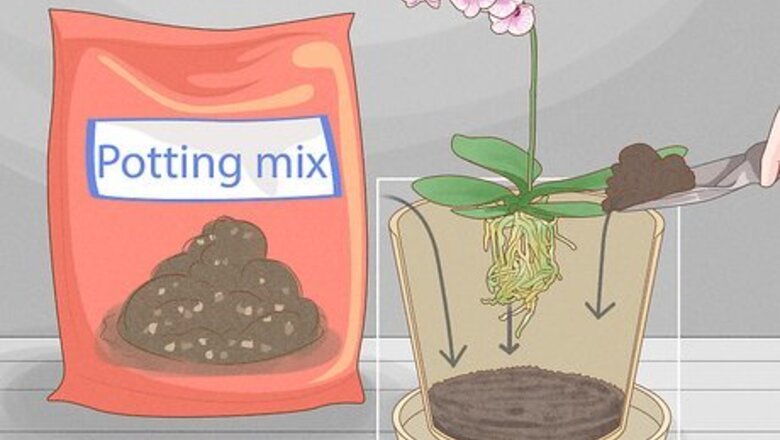
views
Here are 8 tips for caring for a moth orchid so it thrives.
Pot your orchid in a clay pot.
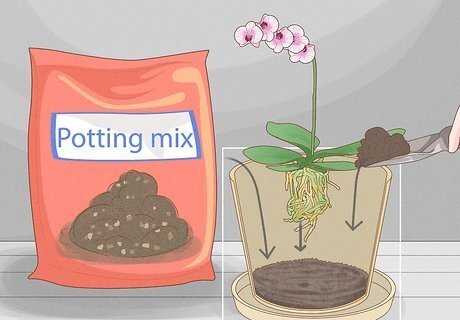
Use a potting mixture meant for orchids. The size of the pot depends on the size of your orchid, but choose one just big enough to fit the roots of your plant without twisting or manipulating them. Make sure it has drainage holes in the bottom and get a saucer to put under the pot. Next, cover the bottom of the pot with the potting mixture. Then, set the plant inside the center of the pot with the lower leaves hanging just above the rim. Add more potting mix to fill the gaps in between the roots. Keep filling the pot until you've reached below the base of the lower leaves. Avoid using a pot that's too big for your plant. Its size makes it hold excess water, which can rot the roots. Try not to leave any air bubbles between the soil and the roots. It's also best to avoid using regular houseplant soil to pot your orchid. Water the plant after potting!
Water your orchid only when the soil is dry.
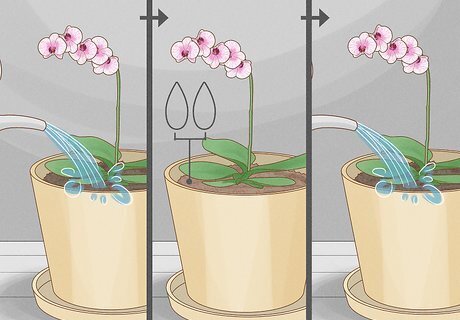
Gently pour water over the potting mixture. Do so until water runs through the bottom of the pot. Get rid of any water remaining in the saucer underneath the pot, as this can rot the roots. Wait to water your orchid again until the potting mix is completely dry. This helps you avoid overwatering your orchid. Stick to just watering the potting mix. Watering the flowers or the leaves can damage your plant. It may help to set the orchid pot in the sink while you water it. It's better to underwater than to overwater your orchid. Overwatering can cause the roots to rot.
Fertilize your orchid after you water it.
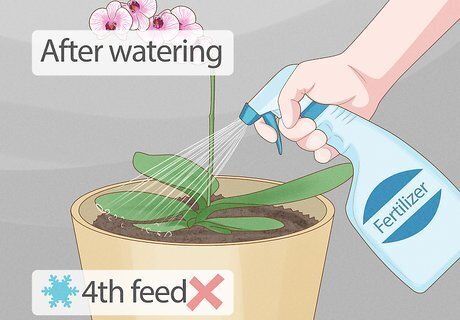
Use half or a quarter strength fertilizer meant for orchids. These come in powder and liquid forms. Check the container label and follow the dosage requirements. Fertilize your orchid after you water it. During winter, skip a feeding every fourth time you water the plant. Orchids don't need to feed as often during this season. Orchids don't need as many nutrients as other houseplants, so the ingredients and dosage recommendations for regular fertilizer are too strong for them. Over-fertilization can really damage the orchid. You may be overfertilizing your plant if the tips of the leaves start to turn brown. If you notice this, there's a solution! Flush the potting mixture with water to get rid of the excess fertilizer.
Display your orchid in low to medium light.
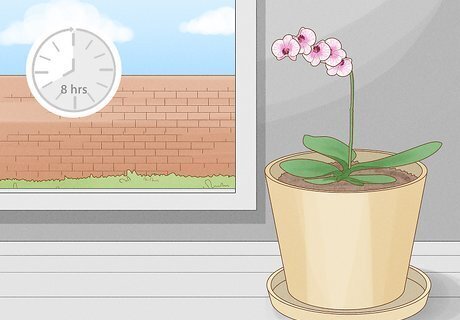
Your orchid needs 8 hours of indirect sunlight each day. Keep the orchid by an east or west-facing window in your home. Dust off the plant with a mildly wet cloth to ensure that the sunlight gets to the leaves. Dust can block the sun from reaching the plant. Avoid displaying your orchid in direct sunlight. This can be too harsh on your plant. Plants can get sunburns, too! Move your orchid to a shady location in your space during the summer. This helps you shield your orchid from direct sunlight.
Keep your orchid at a warm temperature.
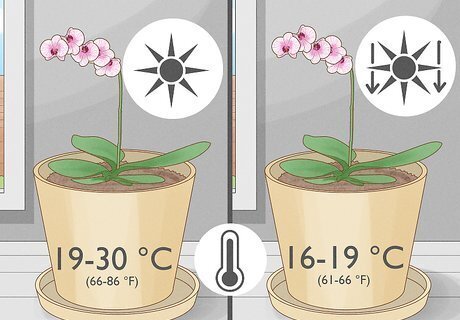
During the day, keep the temperature at 19–30 °C (66–86 °F). Adjust the temperature in the evening to allow your plant to cool off. Lower the temperature to 16–19 °C (61–66 °F). If your plant is healthy but doesn't seem to be flowering, try lowering the temperature by 5°C for 4 weeks. This can help your plant produce flowers!
Cut the flowers when they wilt.
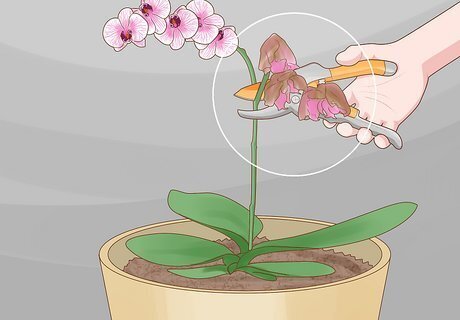
Trim the flowering stalk back to the second node under the flowers. Orchid flowers usually last about 3 months. If you notice a flower starting to wilt, cut it with scissors. It may be hard to part with the gorgeous bloom, but this will help ensure another flower in the future!
Repot your orchid when the lower leaves die.
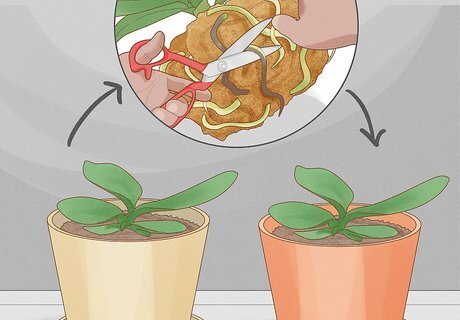
This usually ends up being about every 2 years. First, grab your orchid by the stem and carefully ease it out of the pot. You may have to break the pot to avoid damaging the plant. Pick off the dead leaves at the bottom with your hands. Remove any dead bloom stalks as well. Next, use a razor blade to cut off the dead roots. Repot the plant and don't forget to water it once the job is done! Dead roots are hollow and much less solid than live roots. Pay attention to the state of the potting mix. If the bark chips are starting to decompose, it's time to repot your orchid. Never repot your orchid while it's blooming. Wait until they have finished blooming so you don't lose those beautiful flowers!
Get rid of bugs with insecticidal soap.
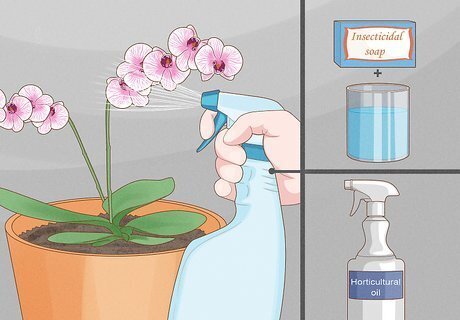
Check your orchids for bugs often to avoid any damage they can cause! If you notice only one or a few bugs on the orchid, simply remove them by spraying them with water. You can also use an alcohol swab to gently take them off the plant. If you notice a potential infestation, use insecticidal soap or horticultural oil to get rid of them. Follow the dosage instructions according to the product label. Don't use pesticides on your orchid. These aren't really meant for indoor plants and could be too harsh.















Comments
0 comment